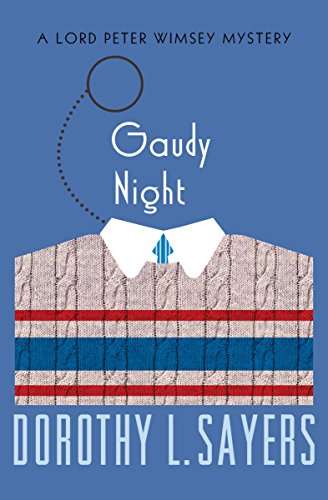
…Like the gentleman in the carol, I have seen a wonder sight—the Catholic padre and the refugee Lutheran minister having a drink together and discussing, in very bad Latin, the persecution of the Orthodox Church in Russia. I have seldom heard so much religious toleration or so many false quantities…
A while ago I reviewed Thrones, Dominations, the first Lord Peter Wimsey novel written by the late Jill Paton Walsh, based on notes by Dorothy Sayers, the creator of the character. I generally liked it, though I thought it sometimes a little forced.
But I thought I’d try the next book in the series, A Presumption of Death, a book Ms. Walsh wrote all by herself, based on a suggestion from Sayers’ writings. She took on a great challenge, but in my opinion the results were almost pitch perfect.
It’s 1939, and England is at war. British forces are on the back foot in Norway (there are many references to Norway in this story). Lord Peter Wimsey, long an asset of British Intelligence, is doing some kind of hush-hush, dangerous work in a place he’s not at liberty to reveal. His nephew Gerald is having the time of his life as an RAF pilot. Harriet Vane, Lord Peter’s wife, has moved the family – including her two babies – from London to Tallboys, to the country house they acquired in Busman’s Honeymoon. In the town, airmen from a nearby base are having a lot of fun with the “land girls,” city girls enlisted to do farm work in the absence of male workers.
Then, after the town’s first air raid drill, one of the girls is found murdered – clearly killed by someone familiar with unarmed combat. The local police detective asks Harriet to help him with the investigation – he feels out of his depth, and she has experience in these things, both as a detective novelist and as a collaborator with her husband. But she makes little progress. Then another body is found – that of a convalescing airman who’d rented a local cottage, apparently slaughtered in a makeshift abattoir in the Wimsey’s barn. When that airman’s identification proves questionable, mystery piles on mystery. That’s when Lord Peter himself appears at last. His exalted connections allow him, with Harriet’s help, to get to the truth of the situation.
I can honestly say that I completely forgot that I was reading a pastiche as I read A Presumption of Death. The book seemed to me a completely successful recreation of the characters, the settings, and the period. If Dorothy Sayers had continued writing Lord Peter books, I’m pretty sure she’d have produced something very much like this. The resolution of the book, in particular, seemed to me very much in Sayers’ spirit – a reconciliation of justice and mercy, with an ambivalent suggestion that mercy might not be as merciful as we imagine.
One annoying peculiarity in the book was the author’s repeated misspelling of the word “bailing” in “bailing out” (of an airplane). She spells it “baling.” The editors should have caught this (assuming it’s not just spelled differently in England).
I was also surprised to learn that (according to Lord Peter’s sister) the Delagardie side of Lord Peter’s family is not French, but Swedish.
Anyway, I relished A Presumption of Death. Well done.








